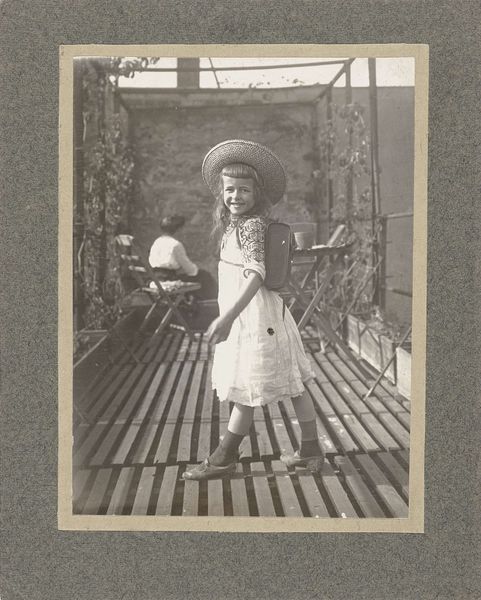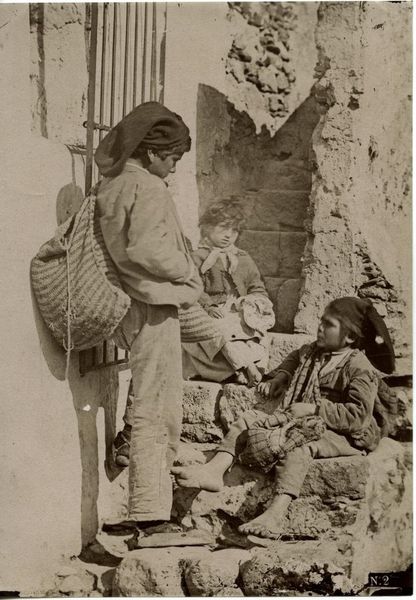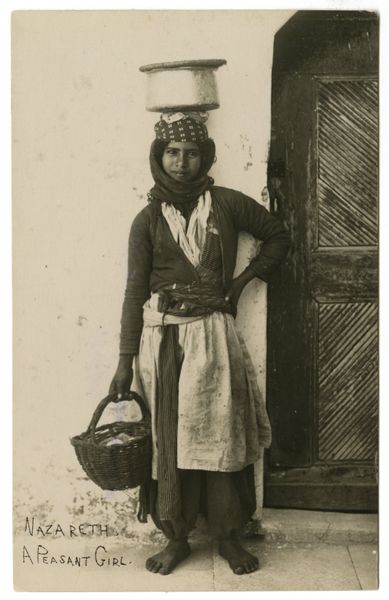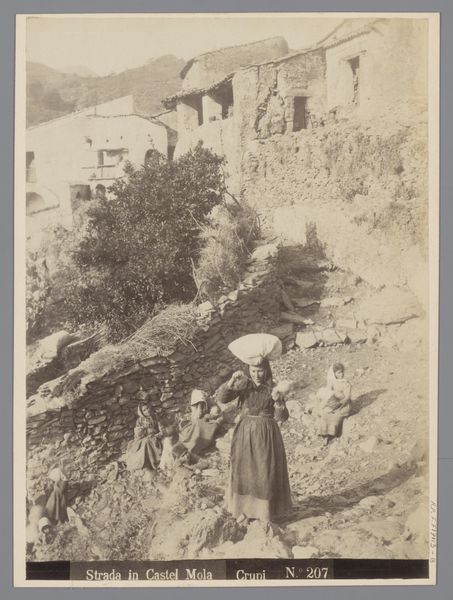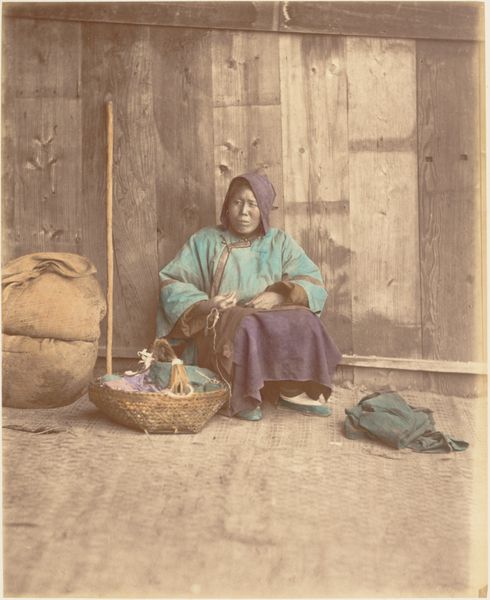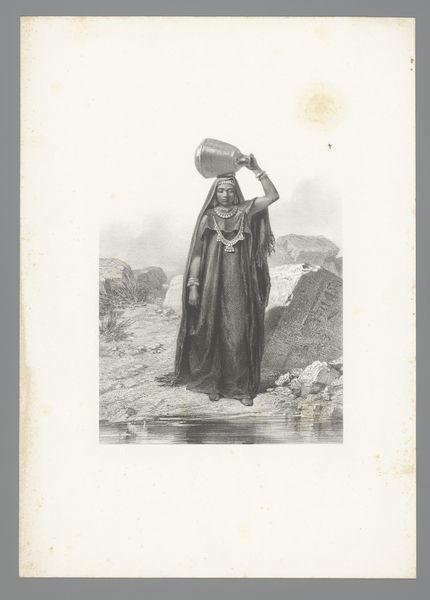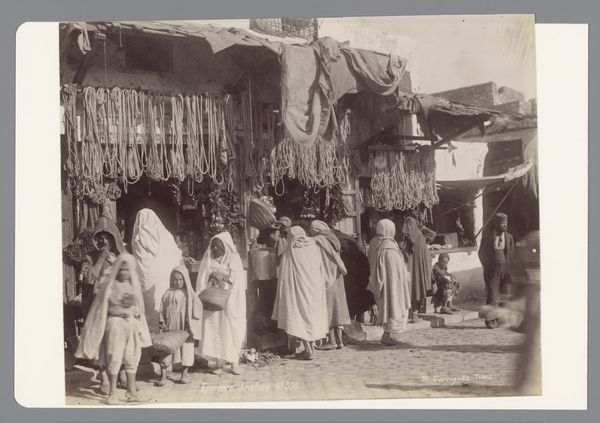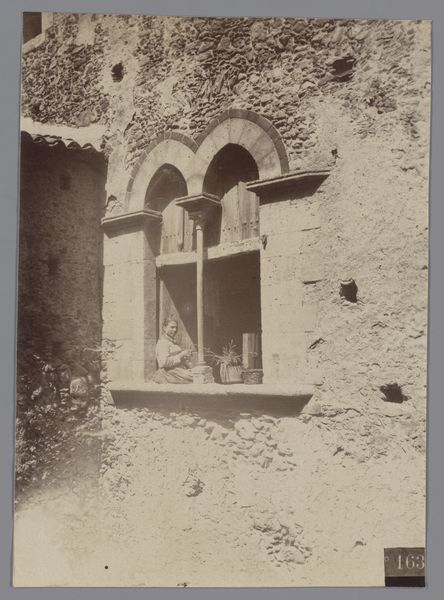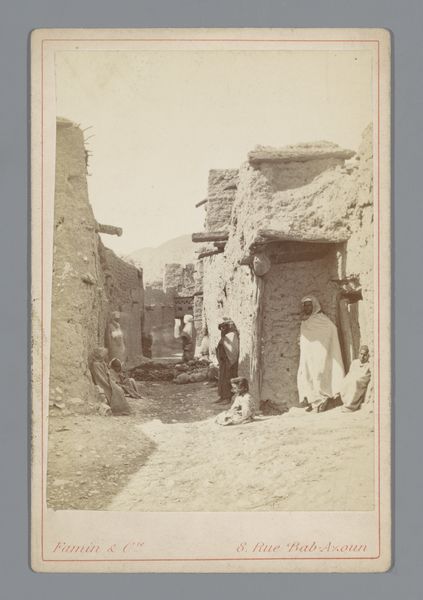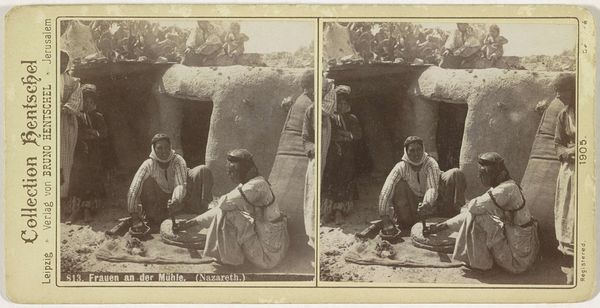
photography, albumen-print
#
pencil sketch
#
charcoal drawing
#
photography
#
child
#
coloured pencil
#
orientalism
#
genre-painting
#
albumen-print
Dimensions: height 275 mm, width 208 mm
Copyright: Rijks Museum: Open Domain
Curator: Before us, we have a piece titled "Onbekende vrouw met spintol, achter haar een kind," dating roughly from 1863 to 1900, and created by Neurdein Frères using the albumen print process. Editor: The texture is quite remarkable. It’s more than just the clarity, there’s an almost tactile quality to the surfaces depicted - the walls, the fabrics. A certain depth… a quiet moment preserved in time, wouldn't you agree? Curator: The albumen process allows for incredible detail. It's a technique where the image is printed on paper coated with egg white, which results in that distinct glossy sheen. It makes you think about the very labor of its production, each print painstakingly created. Editor: And speaking of labor, notice how the woman is posed with the spindle? This simple gesture hints at women’s work, the endless cycles of production that historically structure their lives. The image, situated within Orientalism, begs questions about representation and the male gaze capturing female labor within its frame. Curator: Absolutely. Photography in the 19th century becomes intertwined with the processes of colonial looking. This image isn't just a passive depiction; it actively participates in constructing perceptions of North African life for a Western audience. Editor: Precisely! The staging— the way the child is almost hidden behind the woman— can't be ignored either. What story are they trying to weave for us about motherhood, domesticity, perhaps even female resilience under difficult circumstances? Or how the system operates in regard to the social roles according to their identity. Curator: And thinking about its potential consumption, imagine these prints being sold as exotic souvenirs to European tourists...The mass production and distribution of such images fed into the creation of stereotypes. Editor: Exactly, and as viewers, we should try to disentangle from that and explore what nuances can arise by acknowledging that historical background, perhaps re-envision the photograph, recognizing how the individual agency challenges the stereotype. Curator: It's a photograph that invites multiple readings. It reminds us how integral materials and historical context are to appreciating photography. Editor: Definitely. I come away thinking how photographs like this push us to critically examine the past and our understanding of culture.
Comments
No comments
Be the first to comment and join the conversation on the ultimate creative platform.
